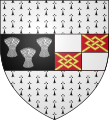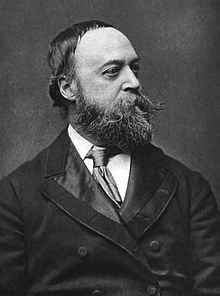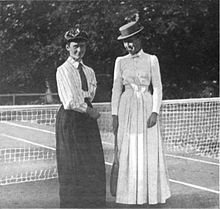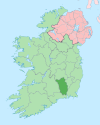The County Kilkenny Portal
County Kilkenny (Irish: Contae Chill Chainnigh) is a county in Ireland. It is in the province of Leinster and is part of the Southern Region. It is named after the city of Kilkenny. Kilkenny County Council is the local authority for the county. At the 2022 census the population of the county was 103,685. The county was based on the historic Gaelic kingdom of Ossory (Osraighe), which was coterminous with the Diocese of Ossory. (Full article...)
Selected articles

County Kilkenny (Irish: Contae Chill Chainnigh) is a county in Ireland. It is in the province of Leinster and is part of the Southern Region. It is named after the city of Kilkenny. Kilkenny County Council is the local authority for the county. At the 2022 census the population of the county was 103,685. The county was based on the historic Gaelic kingdom of Ossory (Osraighe), which was coterminous with the Diocese of Ossory. (Full article...)
Selected history articles
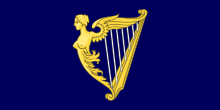
Confederate Ireland, also referred to as the Irish Catholic Confederation, was a period of Irish Catholic self-government between 1642 and 1652, during the Eleven Years' War. Formed by Catholic aristocrats, landed gentry, clergy and military leaders after the Irish Rebellion of 1641, the Confederates controlled up to two-thirds of Ireland from their base in Kilkenny; hence it is sometimes called the "Confederation of Kilkenny".
The Confederates included Catholics of Gaelic and Anglo-Norman descent. They wanted an end to anti-Catholic discrimination within the Kingdom of Ireland and greater Irish self-governance; many also wanted to roll back the plantations of Ireland. Most Confederates professed loyalty to Charles I of England in the belief they could reach a lasting settlement in return for helping defeat his opponents in the Wars of the Three Kingdoms. Its institutions included a legislative body known as the General Assembly, an executive or Supreme Council, and a military. It minted coins, levied taxes and set up a printing press. Confederate ambassadors were appointed and recognised in France, Spain and the Papal States, who supplied them with money and weapons. (Full article...)
Selected landmarks articles

St Mary's is the cathedral church of the Roman Catholic Diocese of Ossory. It is situated on James's Street, Kilkenny, Ireland.
Saint Mary's was designed by William Deane Butler (c.1794-1857). He was chosen by Bishop William Kinsella (1793-1845) who instigated the building of St. Mary's in February 1842. Work began in April 1843 and finished in 1857. On Sunday 4 October 1857, St. Mary's had its grand opening, which consisted of a two-and-three-quarter hour ceremony that began at 6.15am. The cost of the building is estimated to have been £25,000.
St. Mary's is made from cut-limestone which was sourced locally. The cathedral has a cruciform plan and its style is described as ‘Early English Gothic’. The design is believed to have been based on Gloucester Cathedral in Gloucester, England. It is situated on the highest point in Kilkenny City and is a significant local landmark. (Full article...)
Selected geography articles
The barony of Shillelogher (Irish: Síol Fhaolchair, meaning 'territory of the Descendants of Fáelchar') is a barony in the west of County Kilkenny, Ireland. The barony is 36,684 acres (148.45 km2) in size. It is one of 12 baronies in County Kilkenny. There are 19 civil parishes in Shillelogher, made up of 109 townlands. The chief town is Bennettsbridge. Shillelogher lies at the centre of the county, with the baronies of Crannagh and Kilkenny to the north (whose chief towns are Freshford and Kilkenny, and the barony of Gowran to the east (whose chief towns is Gowran). It is borders County Tipperary to the west. The N76 road bisects the barony. The river Nore flows through the barony. Danesfort Church is located in Shillelogher. (Full article...)
Carrigeen (Irish: Carraigín, meaning 'little rock') is a village to the south-east of Mooncoin in County Kilkenny, Ireland. Carrigeen is situated on a hillock within the Suir Valley, contains St. Kevin's Church and belongs to the parish of Mooncoin. There is a primary school and a GAA club in Carrigeen. (Full article...)
The River Nore (Irish: An Fheoir [ə ˈn̠ʲoːɾʲ]) is one of the principal rivers (along with the River Suir and River Barrow) in the South-East Region of Ireland. The 140-kilometre-long (87 mi) river drains approximately 2,530 square kilometres (977 sq mi) of Leinster and Munster, that encompasses parts of three counties (Tipperary, Laois, Kilkenny). Along with the River Suir and River Barrow, it is one of the constituent rivers of the group known as the Three Sisters. (Full article...)
The Nore Valley Way is a long-distance trail under development in County Kilkenny, Ireland. When completed it will be 34 kilometres (21 miles) long and begin in Kilkenny City and end in Inistioge. It is designated as a National Waymarked Trail by the National Trails Office of the Irish Sports Council and is managed by Trail Kilkenny, a group made up of representatives of Kilkenny County Council, County Kilkenny LEADER Partnership, Kilkenny Sports Partnership and local landowners. Two stages are open at present: the first from Kilkenny to Bennettsbridge and the second from Thomastown to Inistioge. The final section – linking Bennettsbridge and Thomastown – is under construction. (Full article...)
Selected quotation
There once was two cats of Kilkenny
Each cat thought there was one cat too many So they fought and they fit And they scratched and they bit 'Til instead of two cats there weren't any. |
— |
Selected Did you know

- ... that in 1967 the Marquess of Ormonde gave Kilkenny Castle (pictured) to the people of Kilkenny?
- ... that the Royal Society of Antiquaries of Ireland was founded in 1849 as the Kilkenny Archaeological Society? (Full article...)
Selected slideshow image
Selected biography articles

The Bishop of Ossory (Irish: Easpag Osraí) is an episcopal title which takes its name after the ancient of Kingdom of Ossory in the Province of Leinster, Ireland. In the Roman Catholic Church it remains a separate title, but in the Church of Ireland it has been united with other bishoprics. (Full article...)
James Stephens (Irish: Séamus Mac Stiofáin; 26 January 1825 – 29 March 1901) was an Irish Republican, and the founding member of an originally unnamed revolutionary organisation in Dublin. This organisation, founded on 17 March 1858, was later to become known as the Irish Republican Brotherhood (I.R.B). (Full article...)
William Gorman Wills (28 January 1828 – 13 December 1891), usually known as W. G. Wills, was an Irish dramatist, novelist and painter. (Full article...)
William Ulick O'Connor Cuffe, 4th Earl of Desart (10 July 1845 – 15 September 1898). He succeeded to the title of 6th Baron Desart, 4th Viscount Desart and 4th Earl of Desart on 1 April 1865 (Full article...)
Selected sport articles
Mabel Esmonde Cahill (2 April 1863 – 2 February 1905) was an Irish female tennis player, active in the late 19th century, and was the first foreign woman to win a major tennis tournament when she won the 1891 US National Championships. (Full article...)
Related portals
Associated Wikimedia
The following Wikimedia Foundation sister projects provide more on this subject:
-
Commons
Free media repository -
Wikibooks
Free textbooks and manuals -
Wikidata
Free knowledge base -
Wikinews
Free-content news -
Wikiquote
Collection of quotations -
Wikisource
Free-content library -
Wikiversity
Free learning tools -
Wikivoyage
Free travel guide -
Wiktionary
Dictionary and thesaurus
© MMXXIII Rich X Search. We shall prevail. All rights reserved. Rich X Search

































